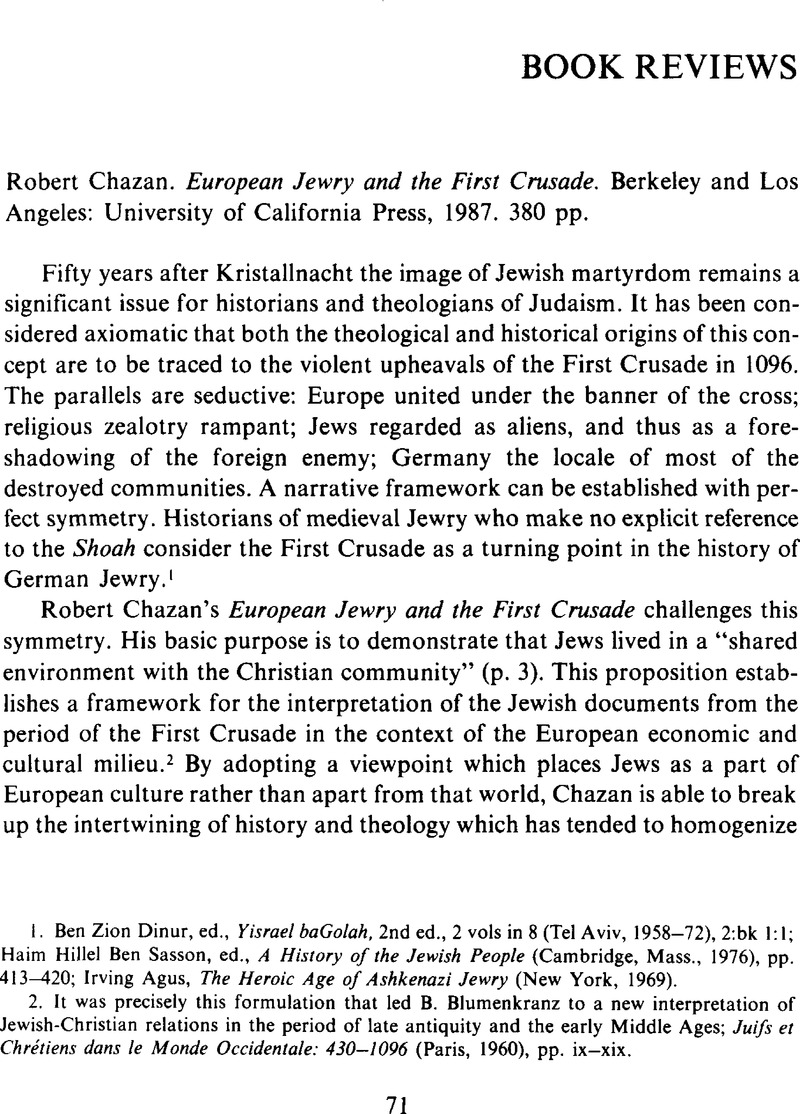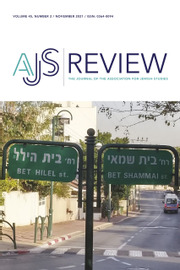No CrossRef data available.
Article contents
Robert Chazan. European Jewry and the First Crusade. Berkeley and Los Angeles: University of California Press, 1987. 380 pp.
Published online by Cambridge University Press: 15 October 2009
Abstract

- Type
- Book Reviews
- Information
- Copyright
- Copyright © Association for Jewish Studies 1989
References
1. Dinur, Ben Zion, ed., Yisrael baGolah, 2nd ed., 2 vols in 8 (Tel Aviv, 1958)Google Scholar, 2:bk 1:1; Sasson, Haim Hillel Ben, ed., A History of the Jewish People (Cambridge, Mass., 1976), pp. 413–120; Irving Agus, The Heroic Age of Ashkenazi Jewry (New York, 1969).Google Scholar
2. It was precisely this formulation that led B. Blumenkranz to a new interpretation of Jewish-Christian relations in the period of late antiquity and the early Middle Ages; Juifs et Chretiens dans le Monde Occidentale: 430–1096 (Paris, 1960), pp. ix-xix.
3. Marcus, Cf. Ivan G., From Politics to Martyrdom: Shifting Paradigms in the Hebrew Narratives of the 1096 Crusading Riots, Prooftexts 2 (1982): 40:52. Chazan presents the details of his argument with Marcus on p. 308, n. 21. What is most impressive is that both authors argue that the hermeneutical framework for discussing the Chronicles should be literary patterns rather than empirical verification.Google Scholar
4. There has been a tendency among medievalists, in their evaluations of intellectual developments during the twelfth century, to emphasize France over Germany. An excellent corrective perspective may be found in Engen, John van, "Benedictine Monasticism in the Years 1050–1150," Speculum 61 (1986): 264–304.Google Scholar


